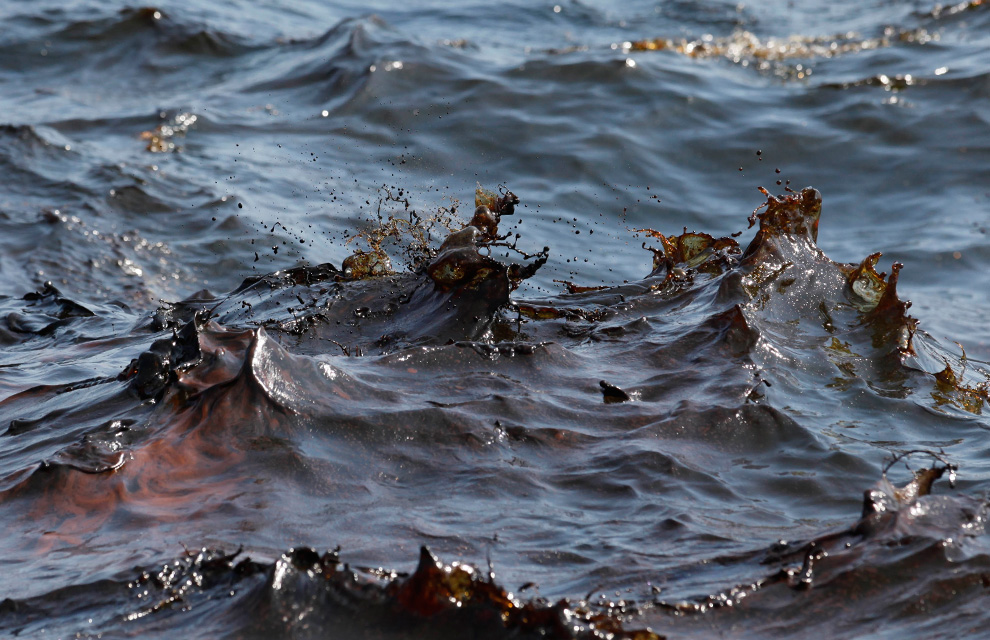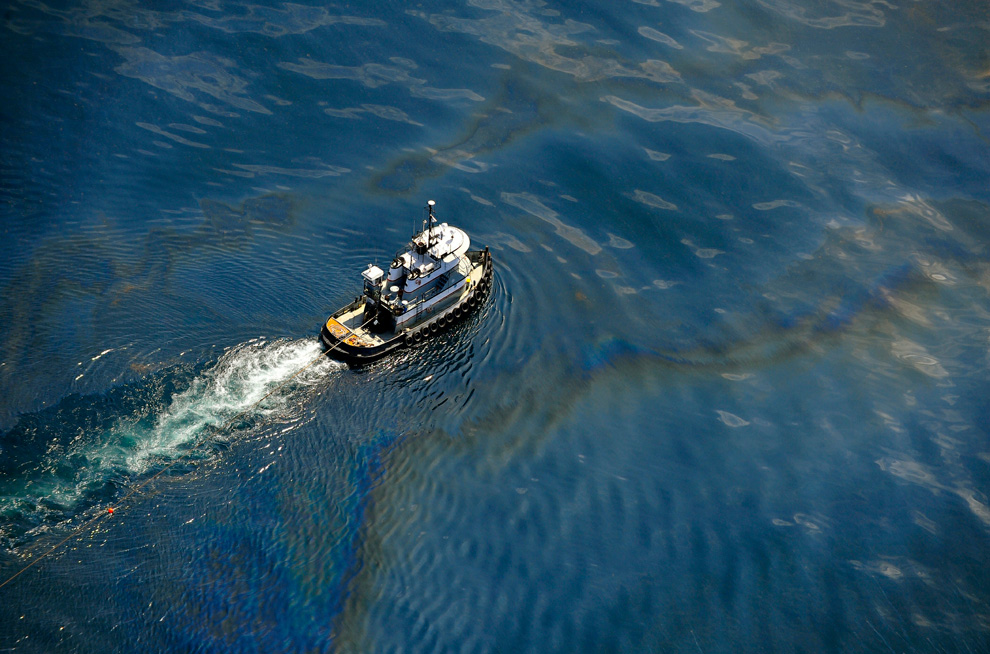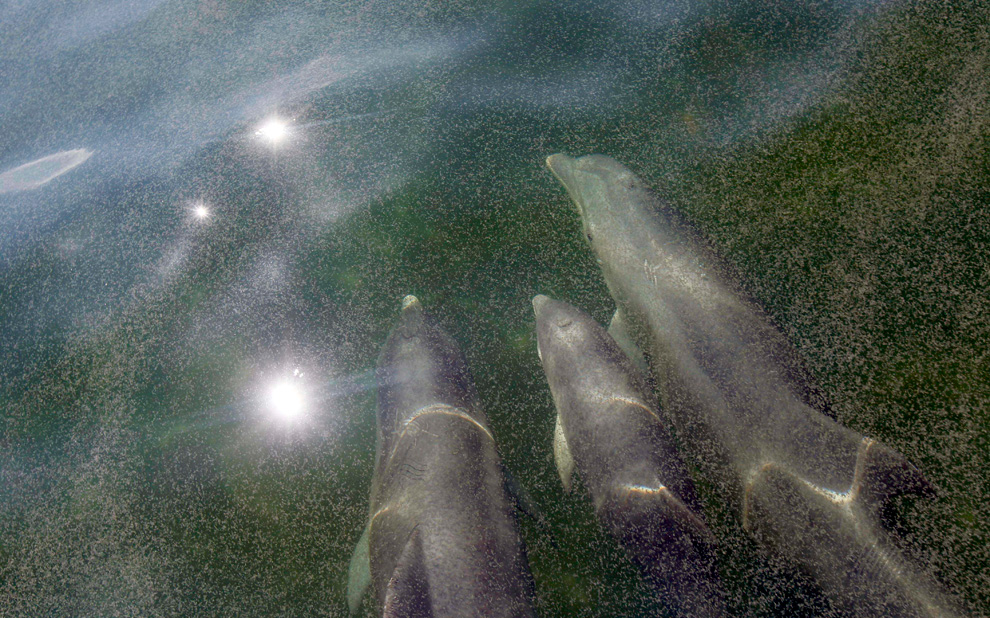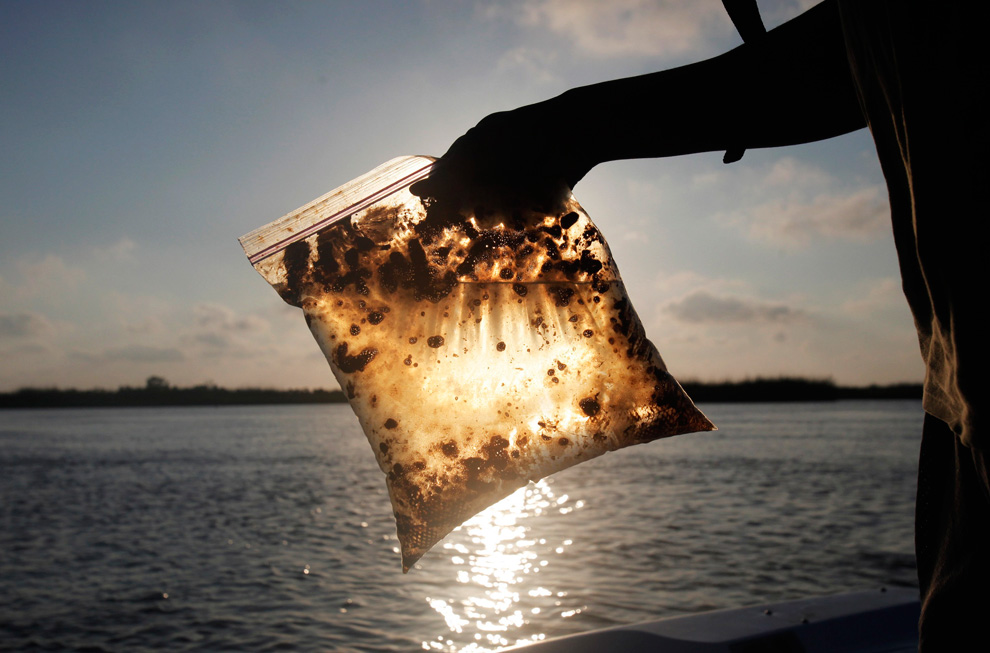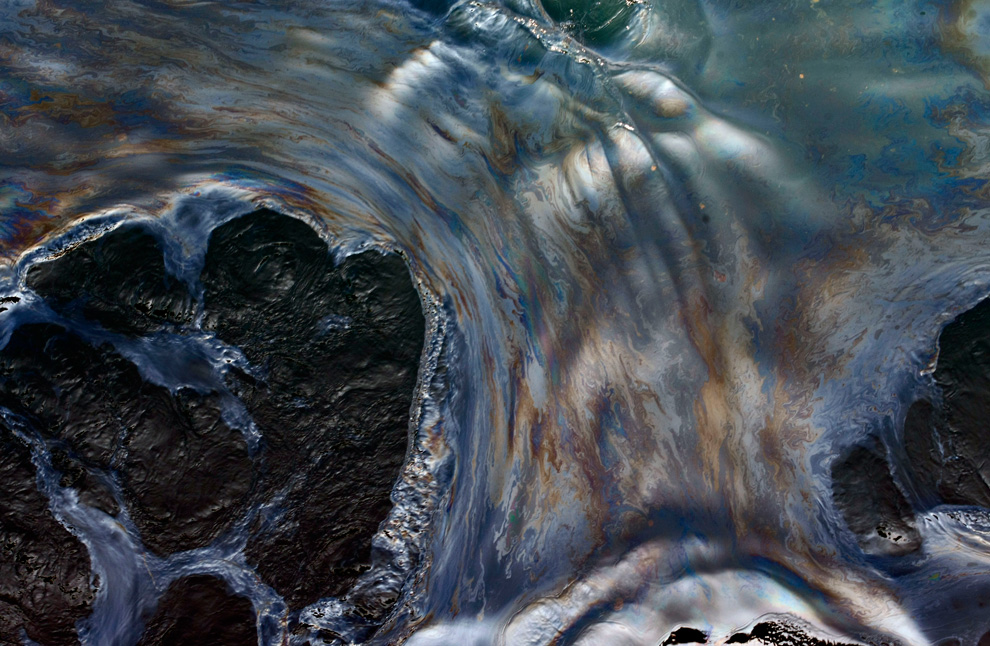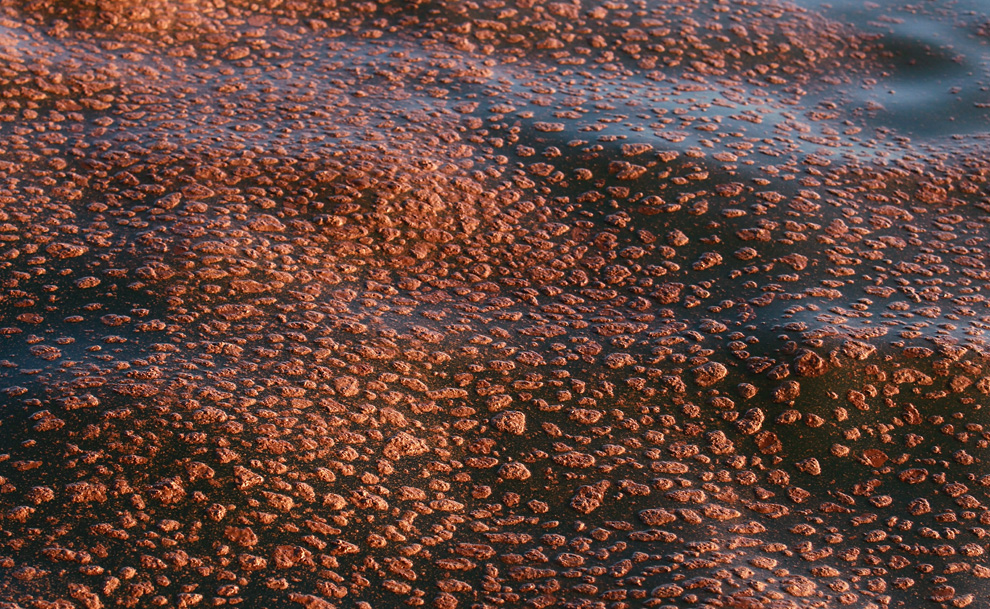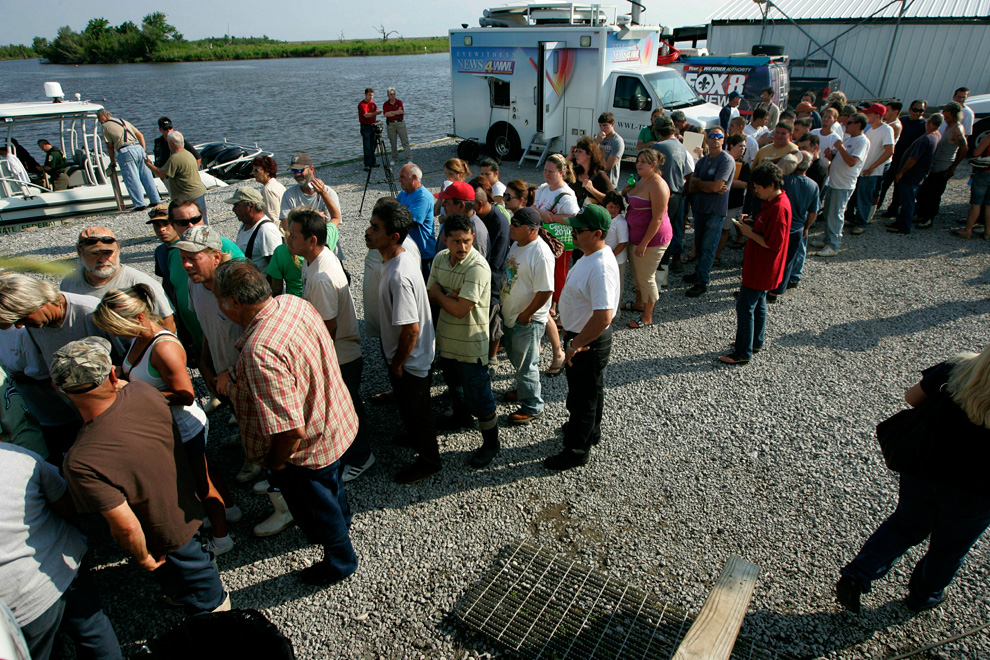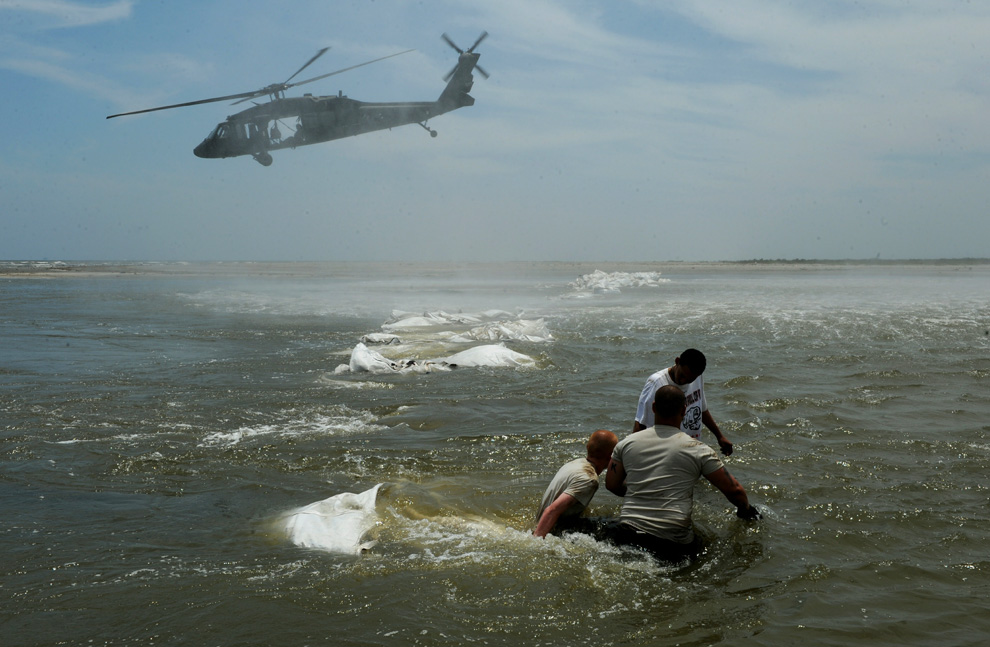THE BP DISASTER
BP Oil Spill Live feed: Co. To Show
Video During Top Kill Procedure
WASHINGTON - BP readied yet another attempt to slow the oil gushing
into the Gulf on Tuesday as a government report alleged that drilling
regulators have been so close to the industry they've been accepting gifts
from oil and gas companies and even negotiating to go work for them.
President Barack Obama prepared to head to the Gulf on Friday to review
efforts to halt the disastrous flow.
Scientists said underwater video of the leak showed the plume growing s
ignificantly darker, suggesting heavier, more-polluting oil is spewing out.
BP's next effort to stop the gushing oil will, perhaps Wednesday, is to involve
a procedure called a "top kill," in which heavy mud and cement are to be shot
into the well to plug it up. The procedure has never been tried a mile beneath
the sea, and company executives estimate its chances of success at 60 to 70
percent.
Rep. Edward J. Markey (D-Mass.) who pushed BP to release a live feed of
the spill has just announced that his office has learned that BP will kill the live
feed during the "top kill" procedure.
In Washington, the Obama administration said it has been laboring to root out
problems at the agency that regulates offshore drilling.
In at least one case, according to a new report from the Interior Department's
acting inspector general, an inspector for the Minerals Management Service
admitted using crystal methamphetamine and said he might have been under the
influence of the drug the next day at work.
The report cites a variety of violations of federal regulations and ethics rules at
the agency's Louisiana office. Previous inspector general investigations have
focused on inappropriate behavior by the royalty-collection staff in the agency's
Denver office.
The report adds to the climate of frustration and criticism facing the Obama
administration in the monthlong oil spill disaster in the Gulf of Mexico, although
it covers actions before the spill. Millions of gallons of oil are gushing into the
Gulf, endangering wildlife and the livelihoods of fishermen, as scrutiny intensifies
on a lax regulatory climate.
The report began as a routine investigation, the acting inspector general, Mary
Kendall, said in a cover letter to Interior Secretary Ken Salazar, whose
department includes the agency.
"Unfortunately, given the events of April 20 of this year, this report had become
anything but routine, and I feel compelled to release it now," she wrote.
Her biggest concern is the ease with which minerals agency employees move
between industry and government, Kendall said. While no specifics were included
in the report, "we discovered that the individuals involved in the fraternizing and gift
exchange -- both government and industry -- have often known one another since
childhood," Kendall said.
Their relationships took precedence over their jobs, Kendall said.
The report follows a 2008 report by then-Inspector General Earl Devaney that
decried a "culture of ethical failure" and conflicts of interest at the minerals agency.
Salazar called the latest report "deeply disturbing" and said it highlights the need for
changes he has proposed, including a plan to abolish the minerals agency and replace
it with three new entities.
The report "is further evidence of the cozy relationship between some elements of
MMS and the oil and gas industry," Salazar said Tuesday. "I appreciate and fully
support the inspector general's strong work to root out the bad apples in MMS."
Salazar said several employees cited in the report have resigned, were fired or were
referred for prosecution. Actions may be taken against others as warranted, he said.
The report covers activities between 2000 and 2008. Salazar said he has asked Kendall
to expand her investigation to look into agency actions since he took office in
January 2009.
Salazar last week proposed eliminating the
Minerals Management Service
and replacing it with two bureaus and a revenue collection office.
The name Minerals Management Service would no longer exist.
Members of Congress and President Obama have criticized what
they call the cozy relationship between regulators and oil companies and have
vowed to reform MMS, which both regulates the industry and collects billions
in royalties from it.
The report said that employees from the Lake Charles, La., MMS office had
repeatedly accepted gifts, including hunting and fishing trips from the Island
Operating Company, an oil and gas company working on oil platforms regulated
by the Interior Department.
Taking such gifts "appears to have been a generally accepted practice," the report
said.
Two employees at the Lake Charles office admitted using illegal drugs, and many
inspectors had e-mails that contained inappropriate humor and pornography
on their government computers, the report said.
Kendall recommended a series of steps to improve ethical standards, including a
two-year waiting period for agency employees to join the oil or gas industry.
One MMS inspector conducted four inspections of Island Operating platforms
while negotiating and later accepting employment with the company, the report said.
A spokeswoman for Island Operating Company could not be reached for comment.
The Louisiana-based company says on it website that it has "an impeccable safety
record" and cites Safety Awards for Excellence from the MMS in 1999 and
2002. The company was a finalist in other years.
"Island knows how to get the job done safely and compliantly," the website says.
Sen. Dianne Feinstein, D-Calif., called the report "yet another black eye for the
Minerals Management Service. Once again, MMS employees have been found
culpable of performing shoddy oversight of offshore drilling. The report
reveals an overly cozy culture between MMS regulators and the oil industry."
Feinstein, who chairs a Senate Appropriations subcommittee that oversees the
Interior Department, said she will hold a hearing next month on Salazar's plan to
restructure the agency.

